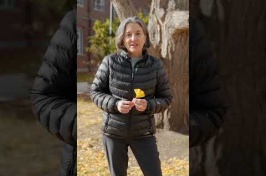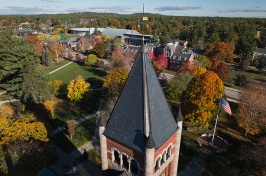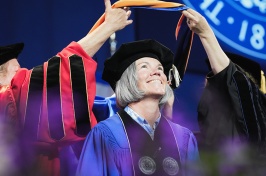
Analena Bruce's research offers insights for creating stronger regional food systems in the Northeast.
Recent estimates indicate that only about 3% of the food consumed in New Hampshire is actually produced within the state. Increasing that number would build support for small and mid-sized farms, as well as reduce dependence on out-of-state supply chains. Researchers at the University of New Hampshire (UNH) are seeing evidence that meaningfully growing resilient local food systems will require overcoming perceived obstacles to local food acquisition and consumption, such as lack of affordability and unfamiliarity with local food outlets. Better strategies for engaging stakeholders and the public also need to be developed.
The findings are being released in a set of research briefs focused on increasing public participation in alternative food networks, such as farmers’ markets. The briefs also offer timely insights into how communities, institutions and individuals can help create stronger, more sustainable regional food systems. The research was supported by the U.S. Department of Agriculture and the New Hampshire Agricultural Experiment Station and led by members of the UNH Food Systems Lab, including lab director and Station scientist Analena Bruce, Hannah Stokes-Ramos, a postdoctoral associate, and doctoral students Olivia Burton and Cindy Zheng.
The research adds to the growing amount of data and awareness around the complex portfolio of economic and other challenges facing farmers and growers in New Hampshire.
“We are excited to release the briefs, which offer actionable findings grounded in real-world applications,” says Bruce, assistant professor of agriculture, nutrition, and food systems. “We welcome feedback from anyone involved with the food system or who simply cares about where their food comes from.”
The first briefs released are “What Do New Englanders Prioritize When Purchasing Food?” and “Where Do New Englanders Buy Local Farm Food and How Often?” They are based on an extensive population-based survey of more than 2,000 New Englanders, plus 35 in-depth interviews with New Hampshire residents about food shopping habits and attitudes. The summarized findings provide insight into what New England residents prioritize when purchasing food and factors that need to be addressed to help local food producers attract more consumers. For example, while foods that are “tasty,” “healthy,” and “high quality” are top priorities, so are having food be “affordable” and “a good deal.” Therefore, while many people may find the high-quality goods offered at farmers’ markets and farmstands to be appealing, if they find them unaffordable or priced much higher than supermarket food, they may not return often or at all.
The research adds to a growing amount of data and awareness around the complex portfolio of economic and other challenges facing farmers and growers in New Hampshire. Bruce’s recent research has touched upon another related topic: the rapid change in what it means to be viable for modern farms. Most are simply not able to survive by producing food alone, and while farmers have been resourceful in developing alternate revenue streams, reaching more customers and increasing revenue from the farm’s food output would be very helpful.
Local farm viability is key to sustaining a thriving and resilient local food system that can support New Hampshire’s communities during times of uncertainty. With grocery stores operating in most communities around New Hampshire, it’s easy to take day-to-day food availability for granted. But the current structure makes the state’s local food system increasingly vulnerable. While widespread hunger was not a factor during the COVID-19 pandemic, some items did become scarce or unavailable, underscoring the fact that more severe disruptions could lead to food shortages and empty shelves throughout New Hampshire.
The work of Bruce and colleagues seeks to reduce that vulnerability while strengthening agriculture and food production in New Hampshire and the New England region. In part, the research helped inform Bruce’s contributions to the New Hampshire Food Alliance’s sweeping 2025 Strategic Plan, which proposes 140 recommendations across 27 agricultural and food topics to develop a better, stronger and more equitable food system for the Granite State.
The work was supported by the Agriculture and Food Research Initiative, project award no. 20226702436113, from the U.S. Department of Agriculture’s National Institute of Food and Agriculture.

















































